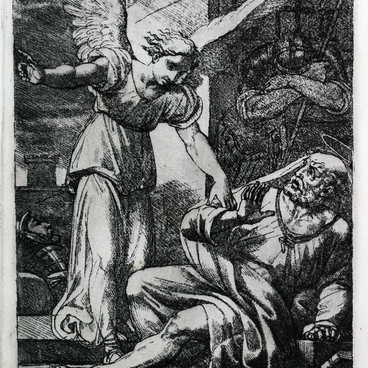View of the Palace Known as Monplaisir
We cannot do without painters and engravers.
It was Peter who initiated establishing a workshop for producing secular prints in the Armory in Moscow in 1698. Encouraging the development of printmaking, Peter used the art for propaganda purposes as well. The tsar generously distributed prints of the new Russian capital among Western diplomats, merchants, and travelers. Thanks to these prints, the first architectural landscapes of St. Petersburg were created, allowing modern viewers to imagine what the city looked like a hundred or two hundred years ago.
The city’s magnificent architecture attracted many artists, including Stepan Filippovich Galaktionov (1778–1854). He participated in creating a series of prints titled “Views of the Suburbs and Environs of St. Petersburg” under the direction of Semyon Shchedrin and Ignaz Klauber. After entering the Academy of Arts in 1785, Galaktionov studied landscape painting under the guidance of Mikhail Matveyevich Ivanov. In 1799, upon the request of Emperor Paul I, who had seen his pen and ink drawings, Galaktionov transferred to the landscape printmaking class headed by the famous Ignaz Klauber. He graduated from the Academy of Arts with a first-degree certificate in 1800.
“Views of the Environs of St. Petersburg” based on the paintings by Semyon Shchedrin were created by the engravers Stepan Galaktionov, Andrey Ukhtomsky, Ivan Telegin, and the brothers Kozma and Ivan Chesky. The series included 23 prints based on Shchedrin’s paintings. Only one etching “View of Marly and the Golden Mountain from Parnassus in Peterhof” was made by Stepan Galaktionov using his own design. The series of prints was commissioned by Emperor Paul I. After his death in 1801, the work continued for his successors: the Dowager Empress Maria Feodorovna, Emperor Alexander I, and his wife, Empress Elizabeth Alexeievna.


